If you don’t know about how to plan your web site architecture for SEO, this 20 minute video by Matt Diggity is a great crash course that teaches you everything you need to know.
Top-Down Recycle
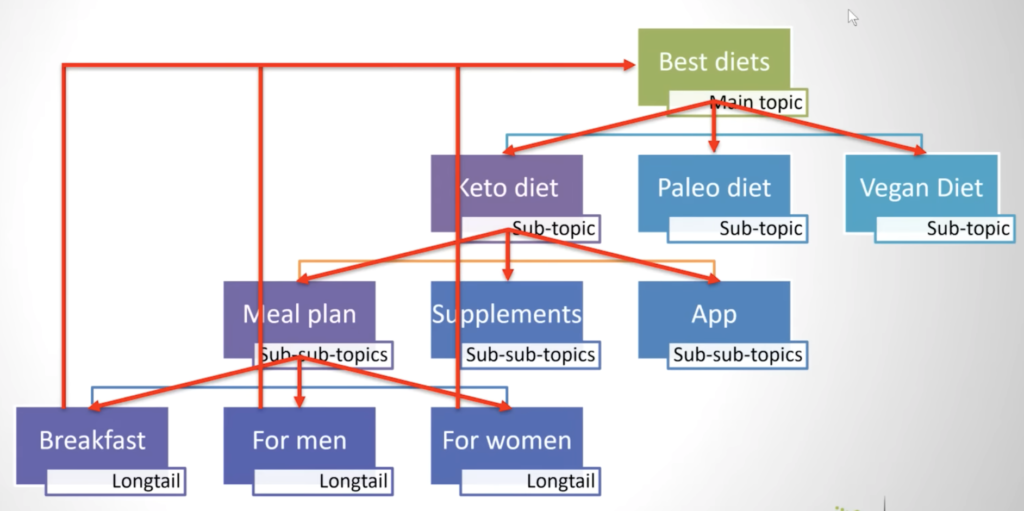
The way these sites are interlinked are all through contextual links that link from the body of the article to the pages with optimized anchor texts. And then from them bottom-layer it points back ot the “Best diets” (main topic) page. This way you design your linkjuice flow to flow forward to other pages of your site.
Disadvantages of this structure:
- Not great topical relevance (e.g. the “Supplements” page has only one link from the “Keto diet” page).
- Typically you want things to go the other way. So for example if someone lands on your page “Keto diet meal plan for men”, you want to direct them to a keyword that has a more commercial intent, like the supplements page.
The reverse silo
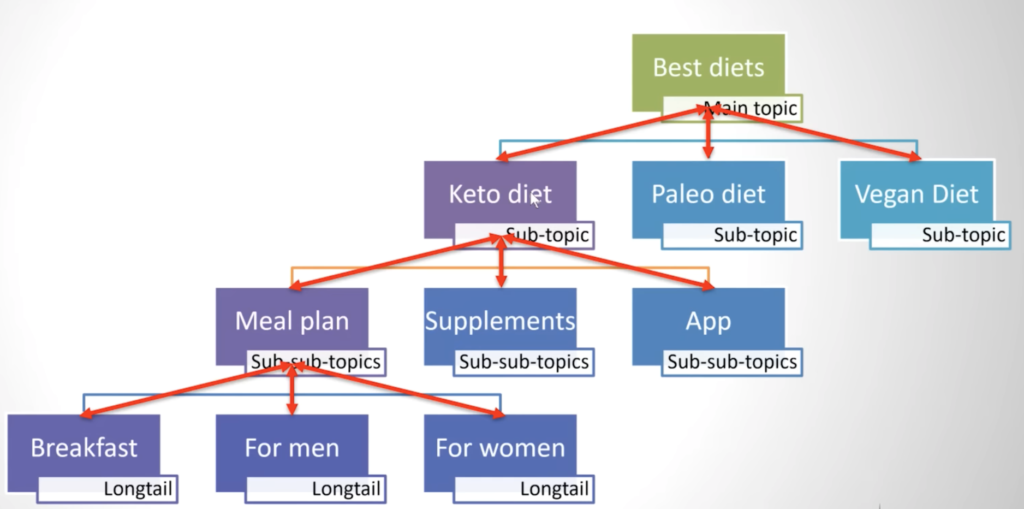
What’s good about this is that there are two-way links, and much better topical relevance (e.g. the “keto diet” page has many more links than in the top-down recycle structure.
The serial silo
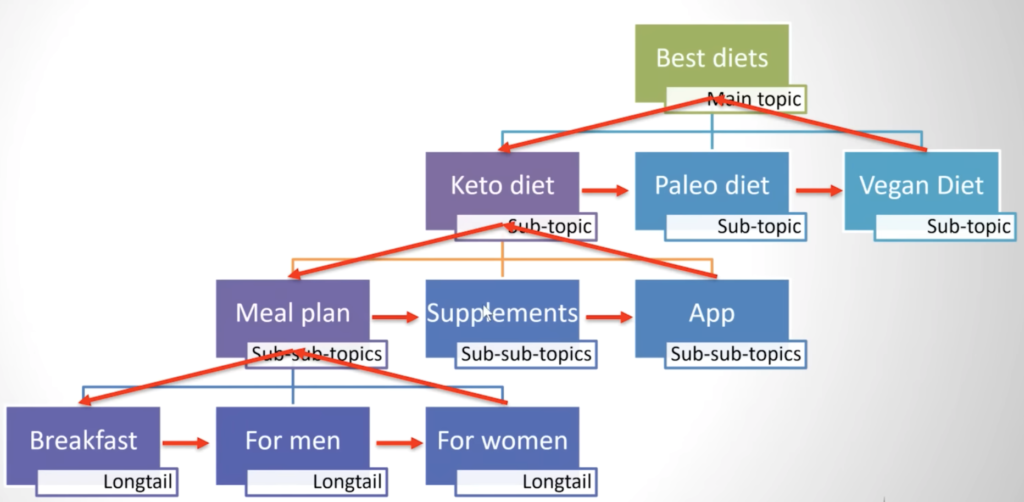
This configuration doesn’t make much sense. The topical relevance isn’t great (e.g. why is keto diet linking to paleo diet?).
Yolo Silo
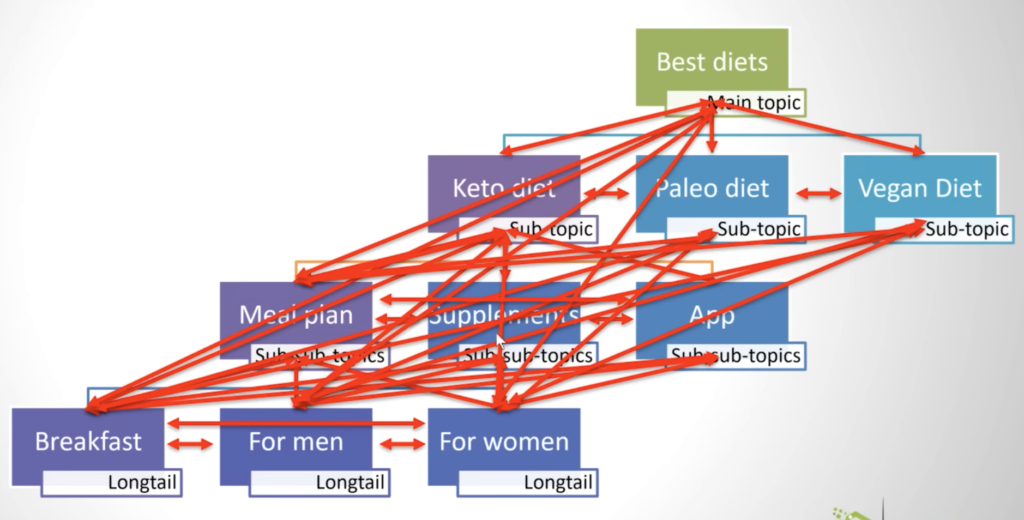
With this configuration every page links to every other page. It’s a total chaos, and it makes it hard for Google to determine which pages are your highest priority pages.
Priority Silo
Matt recommends this only for advanced SEOs.
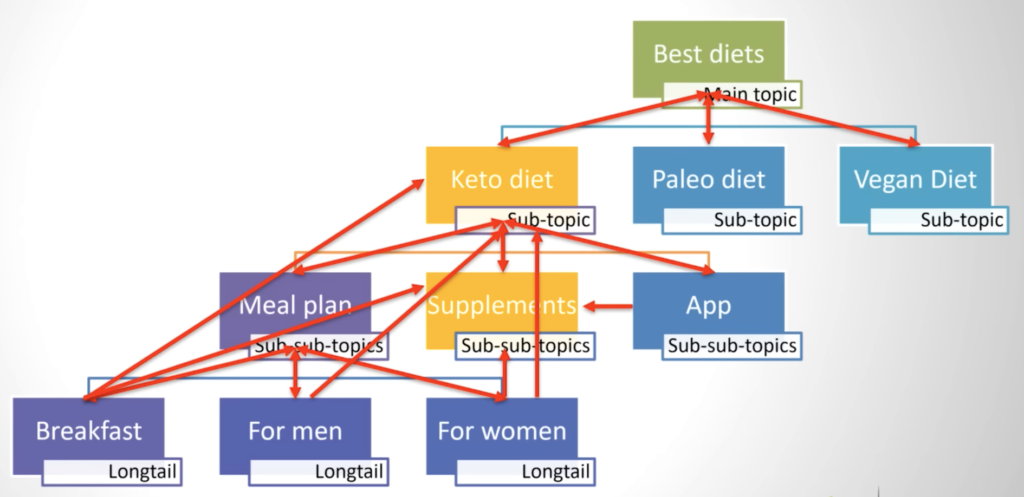
Basically you do a reverse silo, but then you also identify your money pages and manually build lots of topically relevant links to those from various pages of your site. Many successful sites (like The Wirecutter for example) link this.
TLDR: For beginners Matt recommends the reverse silo, because it’s easy to follow. For advanced SEOs, Matt recommends the Priority Silo, where the main downside is that there’s more management involved.
How relevant do pages need to be to link them?
For new sites, you should make each link very, very relevant. E.g. paleo pages should only link to other paleo pages, to make it easy for Google to recognize topical relevance.
If you have a more established site, you can loosen up the criteria, basically you get away with a lot more because Google already has a sense for your type of topic your site is about.
Never have a dead-end page. You always want to close the loop. Every page should link to some other internal page, to keep the link juice circulating.